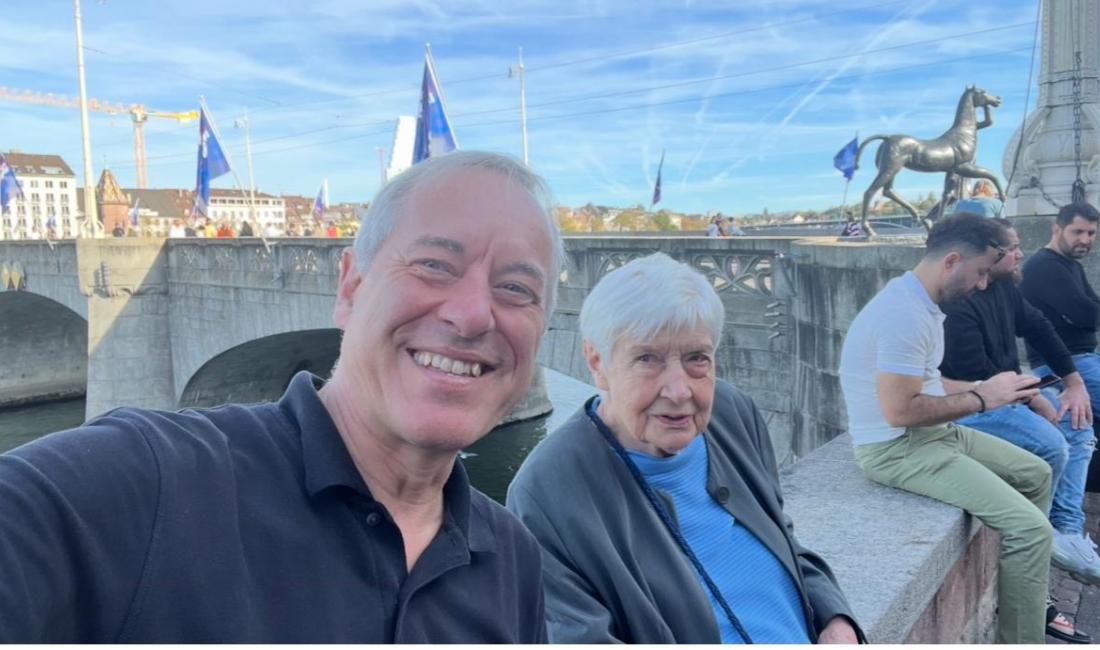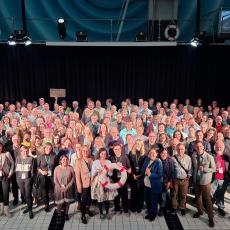A visit to mom, and a window on votes to collaborate across voters—and create electronic ID.
This item is part of a regular Democracy Local feature, "Where in the World Is Bruno Kaufmann?" which draws from the wanderings of the democracy reporter and supporter, as he works for Swiss Broadcasting, the Swiss Democracy Foundation, and the Global Forum on Modern Direct Democracy.
I was in Basel visiting my mother, who is 93, following the Swiss voting day. We had two national votes, and one statewide vote.
The local one was about Basel joining more Europe, becoming more a part of the European Union. How does a city become more a part of the union? Well, they have a proposal to work more with the counterparts across the border in German and French communities, and they needed to vote to create a legal basis for that. France and Germany are so close—you can go by tramway to both countries from Basel. Or just walk. Now this need to work closer togheter with neighbors is put into the Basel constitution.
Then there were the national issues on the ballot. The big thing was EID (Electronic ID), a vote on whether to allow such IDs for those Swiss who want them. In 2021, there was the first national vote about it, and two-thirds said no because it would give the right to private companies to provide the ID, and get the data. People didn’t like that.
More recently, the government came up with a new proposal for E-ID that this is officially issued by the government. So it’s a publicly owned ID card, and all the data is owned by the government, with the servers in Switzerland, with no possibility to lose your data to private interests.
The surprising thing was that in the polls, this new proposal for a public E-ID was far ahead, it was a clear majority, almost two thirds. But in the actual vote, it was just 50.1 percent. 15 out of the 23 states said no. It was only the in the final hours of counting when the cities came in—Basel, Zurich, Ber, and the place where I can vote, Lucerne—that it came into the yes.
With this small majority It passed. (You didn’t need the Swiss double majority, of getting a national majority and a majority of the states, because that applies to constitutional citizens initiatives and this was a referendum on a law). It’s a big change. It allows all kinds of digital services, and paves the ways for e-voting and e-collection of signatures for petitions. That’s a major advance. Swiss digitalization may be a slow digitization, but it’s a digitization based on the preferences of the people.
Already the day after the vote, the EID app was the most downloaded app in all Switzerland. And we had happy losers. The losers of the vote were happy because they almost won and contributed so much to the debate. And the winners said that the losers also had many good arguments, and will work to incorporate them.
My mother voted yes, by the way. She was rather skeptical, and she won’t really use the E-ID. But in recent years, she’s started to FaceTime and WhatsApp with her grandchildren and great grandchildren. She understands the benefits from digital tools.
One reason this works is because there is a choice. You can choose whether to have an E-ID or now. This is typical Swiss. You don’t replace. You just add and see what everyone does.





